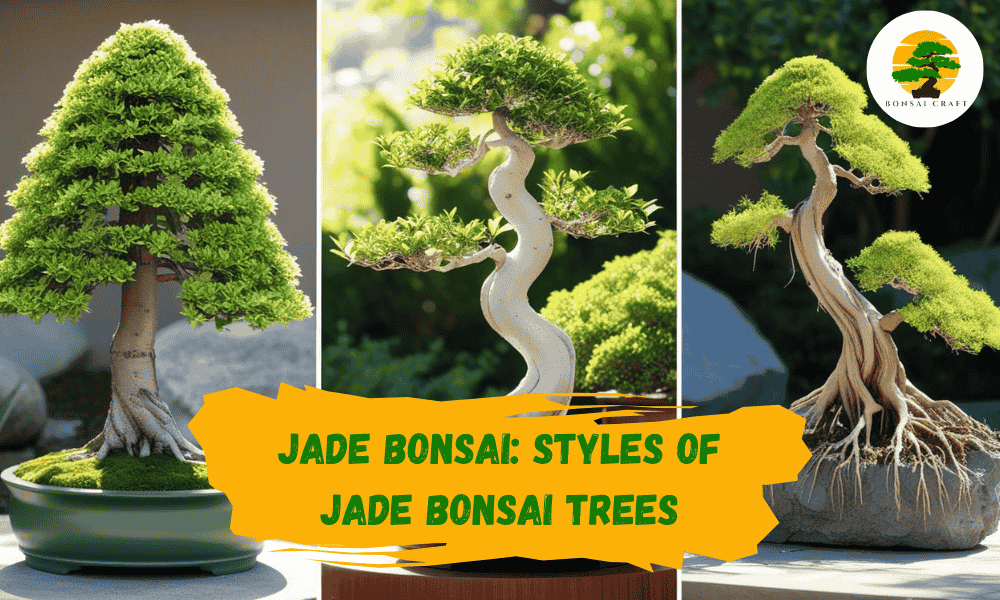
The Jade bonsai tree plant, or Crassula ovata, is native to the Cape Town area of South Africa. The jade tree plant is part of a classification of plants known as succulents. The jade plant has thick, glossy, deep green, oval-shaped leaves and thick brown stems.
Succulents generally grow in dry areas like deserts, where their leaves retain water for long periods of time. The jade plant prefers thick, sandy soils, similar to those found in its natural desert habitat. Because of this, jade plants are excellent for beginner gardeners, as they are low-maintenance.
Most people don’t realize that the jade plant produces pink-tipped white flowers with a delicate star shape. This happens when the plant is outdoors during the winter months. When kept indoors, the jade plant bonsai typically doesn’t bloom due to insufficient natural light. The plant blooms in the winter when exposed to natural daylight.
If the plant is kept indoors where the lights are turned on and off, it is unable to sense this change in the amount of daylight, which is what triggers flowering. Experts recommend that for this plant to flourish, it needs to be exposed to daylight outside starting in the fall.
Differences Between Portulacaria (Dwarf Jade) and Crassula Ovata (Jade Tree)
There is often confusion between Portulacaria afra (dwarf jade) and Crassula ovata (jade tree). Portulacaria afra is better suited for bonsai training due to its smaller leaves and easy branching. The dwarf jade bonsai styles are preferred for their compact nature, while Crassula ovata, or jade tree bonsai, has thicker leaves and a more substantial structure, which is better for large bonsai jade plants.
Although succulents and bonsai may seem like an odd association, succulents, such as the jade plant (Crassula ovata), actually exhibit unique morphological traits that make them excellent bonsai. The jade plant’s fleshy leaves and swollen trunk lend interest to a miniature display and can be adapted even by a novice bonsai hobbyist. Guided by the plant’s natural structure, ideal styles for the jade plant include informal upright, slant, and root-over-rock.
Jade Bonsai Styles and Designs
The jade plant bonsai is an excellent choice for bonsai, with its fleshy leaves and swollen trunk. Over time, you can shape your jade bonsai tree into various jade bonsai shapes, including informal upright, slant, and root-over-rock styles. These bonsai jade plants exhibit unique traits that make them ideal for bonsai jade designs..
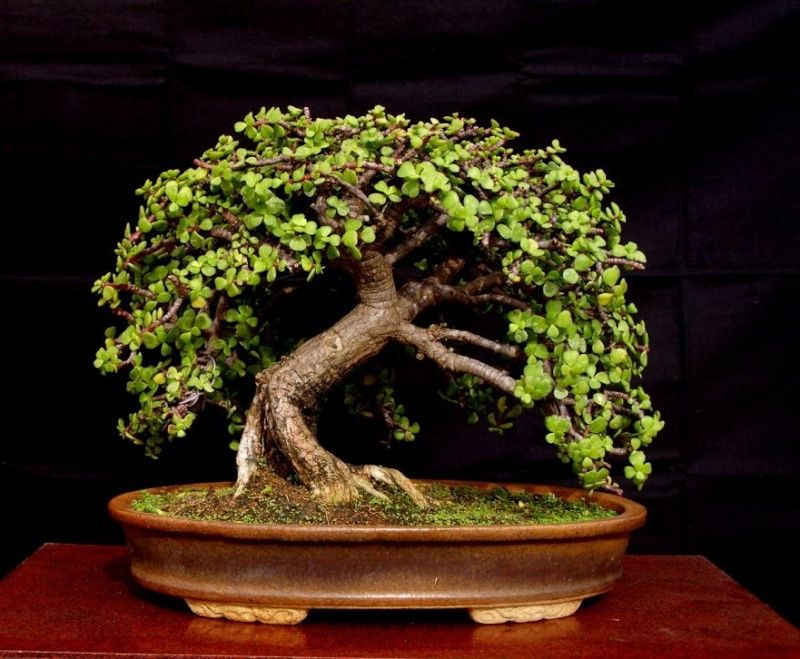
Jade plants should only be placed outside in their containers in the warm and temperate zones. Bring them indoors if the temperature drops below 50 degrees Fahrenheit—plant in well-draining potting mix and report every three to four years in spring. You don’t prune the roots too aggressively; It can weaken the plant. If your bonsai needs wiring to achieve the desired shape, use aluminum wire, which is more flexible than copper.
Casual Upright Style
Like the formal upright, this bonsai style creates an approximately triangular tree shape, but the effect is more irregular and relaxed, with the curvature of the trunk. The trunk tilts 15 degrees or less to the right or left, but never towards the viewer.
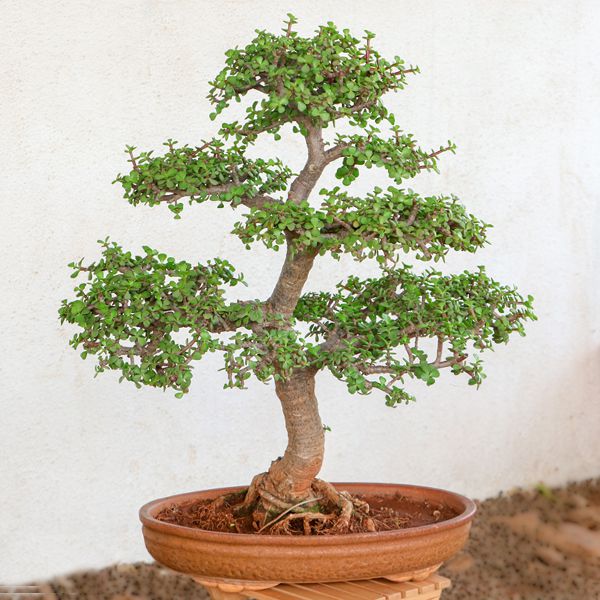
Probably the most popular bonsai design, the trunk line defines the style, depicting a tree in the wild struck by the elements. The bends of the trunk should be spaced closer the higher they are on the tree. Choose the side of the log that shows the most movement for the front of the bonsai. It can simulate the movement of the trunk caused by the stresses of nature from the use of wire.
Slanting Style
Sometimes called the slant style, in this design, the trunk is angled for most of its length at an angle close to 45 degrees. Unlike the similar windswept style, the branches grow on either side of the trunk. Placed horizontally or with a slight drop, the branches appear to have been blown away by the wind.
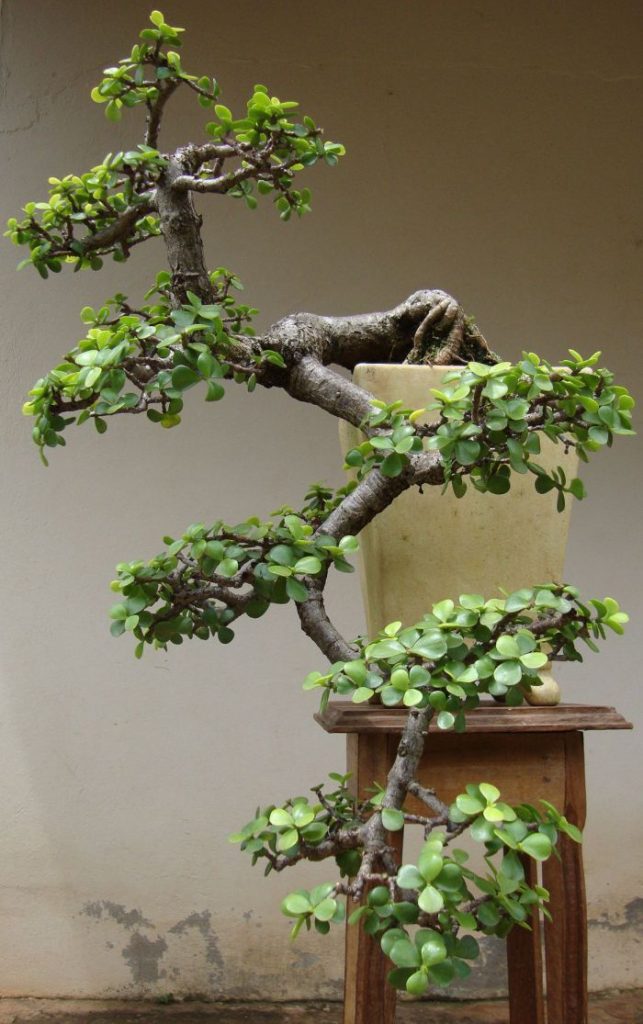
The root system must be more voluminous on the side opposite the lean to balance the tree. The lower branches can be left longer than the upper ones to balance the plant further. Place the bonsai in its container so that the sloping log reaches most of the pot rather than the side.
Root on Rock Style
By requiring the longest wait for results among the recommended jade plant styles, this design mimics how roots of a tree in nature, started by a seed landing in a crevice in a rock, can grow to enclose the rock.
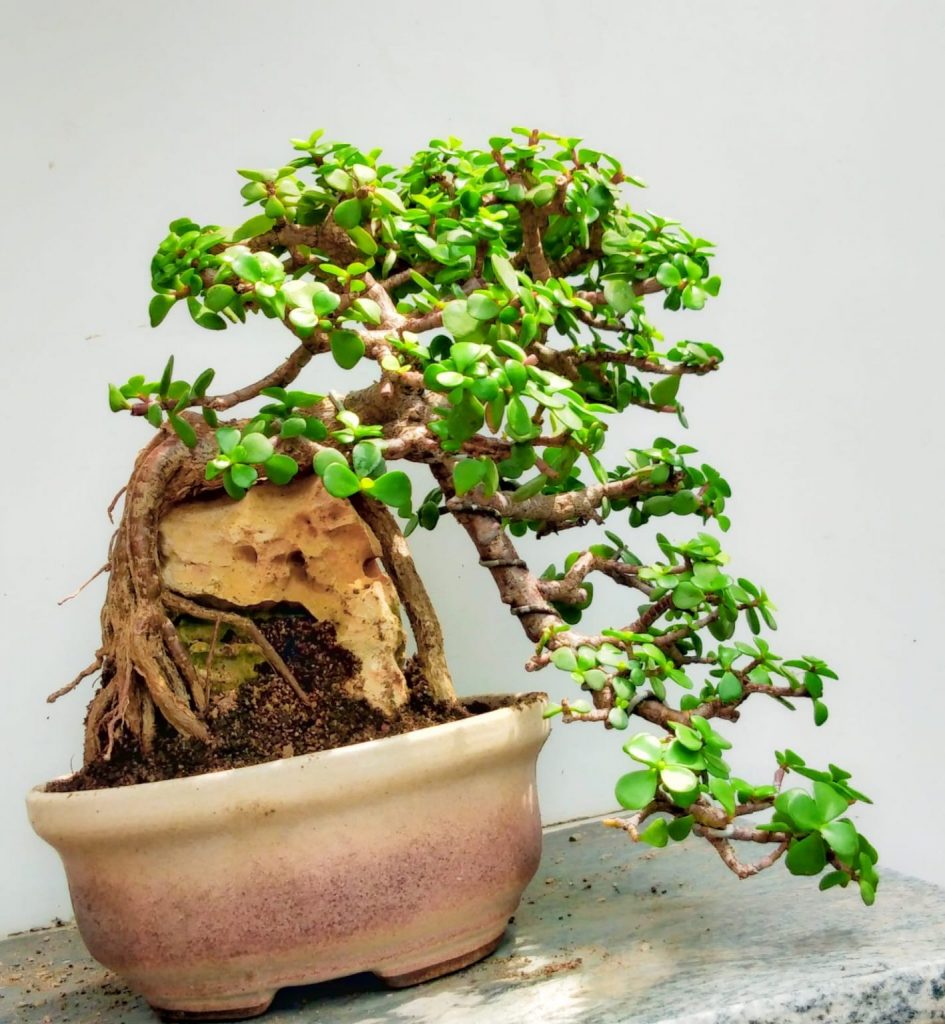
In the jade plant bonsai, this effect can be achieved by burying a rock between the roots of a plant when it is potted. Let them grow for a few years before slowly exposing them and allowing them to harden. For a more established, rooted plant, place a rock on top of the potting mix in a container and spread the roots over the rock and into the ground.
How to Care for a Jade Bonsai Tree?
Jade bonsai care is relatively simple. This drought-tolerant plant thrives with minimal watering. Jade plants can grow up to 6 meters in their natural environment, with a woody trunk and soft leaves. The plant requires full sun exposure, and it thrives in a well-draining potting mix.
How to water a jade bonsai?
It is important not to overdo it with watering, since being a succulent plant, it can retain water in its leaves and trunk. In such a way that we will let the substrate dry between waterings. In winter, we still have to space the watering more. We can even be a week without water. So it is an ideal species for bonsai specialists who do not want to have such a high level of commitment to the tree.
Where to Locate a Jade Bonsai?
Jade plants are native to South Africa, where they thrive in hot, dry areas. Ideally, your bonsai jade plant should be placed in full sun outdoors. Indoors, it can survive, but it will gradually lose vigor and health.
How to Transplant a Dwarf Jade Bonsai?
Transplant your dwarf jade bonsai in spring when the tree begins to show signs of growth. The plant is tolerant of drastic root ball pruning, and its ability to regenerate roots is impressive. Use a draining and porous substrate, as too much water can lead to root rot.
How to Prune a Jade Bonsai Tree?
Prune the bonsai jade plant carefully, but avoid using scar paste. Jade plants have softwood, making them prone to rot if not properly pruned. Prune gently and allow the plant to heal naturally
How to Fertilize a Jade Bonsai?
During the growing season, jade bonsai should be fertilized weekly with a liquid fertilizer to support healthy growth. This helps the plant develop the necessary nutrients for optimal bonsai jade plant care.
How to Form a Bonsai Dwarf Jade from 0?
Portulacarias are ideal for starting bonsai from cuttings. Take a healthy branch, leave it to dry for 24-48 hours, and then plant it in a well-draining mix. The plant will develop roots in no time, and you can start shaping it into your desired bonsai jade plant shapes.
Portulacarias take time to get fat, so we will let the tree grow without pinching or pruning.
When modeling the branches, we must wire them more than once since being a softwood. It returns to its position to repeat the process a few months after removing the first wiring.
Where to buy a jade bonsai
Jades are usually sold in the garden center in the section of cacti and succulents. However, selling them as cuttings of just 10 cm in height without any training as bonsai is prevalent.
To get a specimen with a structure already marked and a future much more focused on its development as a bonsai, I share this link to buy a jade as bonsai.
It is a kind of slow fattening; it is much more profitable to buy the specimen already with specific training, as this will save us a lot of time in its development.
